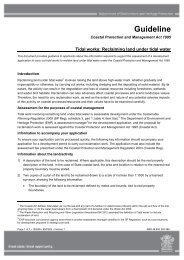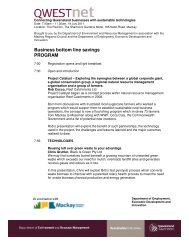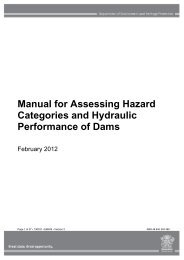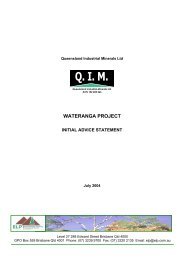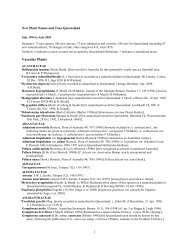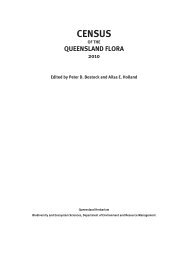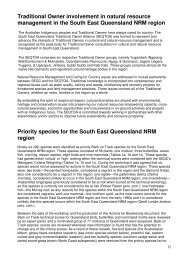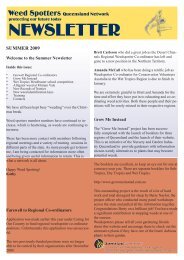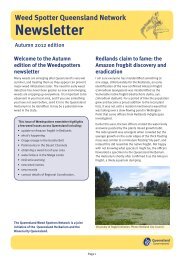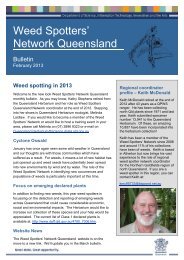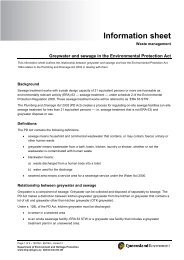Enhancing Biodiversity Hotspots Along Western Queensland Stock ...
Enhancing Biodiversity Hotspots Along Western Queensland Stock ...
Enhancing Biodiversity Hotspots Along Western Queensland Stock ...
Create successful ePaper yourself
Turn your PDF publications into a flip-book with our unique Google optimized e-Paper software.
Executive summary<br />
The <strong>Stock</strong> Route Network (SRN) of western <strong>Queensland</strong> has significant economic<br />
value for pastoralists, and has significant habitat for biodiversity. The network covers<br />
a range of habitats that stretch from the border with New South Wales to the Gulf of<br />
Carpentaria, which in turn support a variety of biodiversity that include many<br />
conservation priorities for <strong>Queensland</strong>. However, a number of threats to the SRN,<br />
compounded by a lack of knowledge about the conservation priorities, are<br />
compromising the management of this resource.<br />
In order to improve the management of the natural values of the SRN, this project<br />
sought to identify some of the biodiversity hotspots on the stock routes of western<br />
<strong>Queensland</strong>, and provide recommendations for their management in order to achieve<br />
the greatest conservation benefits.<br />
To achieve these objectives, the project partners (Southern Gulf Catchments Ltd.,<br />
Desert Channels <strong>Queensland</strong> Inc., South West NRM Ltd., <strong>Queensland</strong> Murray<br />
Darling Committee Inc., and the Department of Environment and Resource<br />
Management) were supported by funds from the Australian Government to map and<br />
identify potential sites, carry out field visits to verify values and threats, and to make<br />
management recommendation for identified biodiversity hotspots.<br />
This project identified 47 biodiversity hotspots as well as other sites of high nature<br />
conservation or geological value, and sites that require further research. For each<br />
biodiversity hotspot the biological values were identified (including the presence of<br />
priority species), as well as the threats, current management, and recommended<br />
management actions.<br />
The condition of the biodiversity hotspots and stock routes were comparable to the<br />
management of the station or protected area they adjoin or traverse, and many were<br />
in good condition. However, common threats were habitat degradation from weeds,<br />
competition/predation by introduced animals, inappropriate fire regime, damage to<br />
springs by feral pigs, and overgrazing by stock in some areas.<br />
Mitigating the threats to these biodiversity hotspots will require: an increased<br />
awareness of the values and management needs of these sites amongst the local<br />
stakeholders; a focus of management on the recommended actions; and increased<br />
coordination amongst stakeholders to make the greatest conservation gains with<br />
limited resources.<br />
The recommendations in this report can be used to help focus the work programmes<br />
of relevant stakeholders, as well as leverage for the funding required to conserve<br />
these biodiversity hotspots.<br />
3



